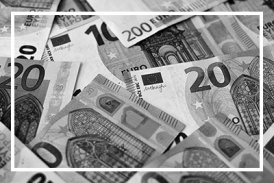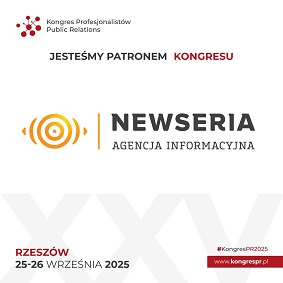The Role of Full-Service Marketing Agencies in Today’s Business Landscape
A full-service marketing agency is defined by its capacity to manage a comprehensive range of advertising and promotional needs under one roof. This typically includes branding, media planning, public relations, digital strategy, website development, social media management, content creation, search engine optimization (SEO), pay-per-click advertising (PPC), email marketing, video production, and traditional media buying for outlets such as television, radio, and billboards.
Unlike specialized agencies that focus on a single channel or tactic, full-service agencies provide an integrated approach—ensuring that all marketing efforts are aligned, measurable, and strategically consistent across platforms.
Brett Thomas, founder of Jambalaya Marketing in New Orleans, notes that businesses often underestimate the value of consolidation in the marketing space.
“The biggest problem most businesses face isn’t a lack of marketing—it’s a lack of cohesion,” says Thomas. “One vendor runs digital ads. Another designs print materials. A third manages social media. There’s no strategy pulling it all together.”
Thomas explains that when messaging is fragmented across different providers, the brand suffers. Disconnected efforts create mixed signals in the marketplace, dilute audience trust, and result in unnecessary spending.
Full-service agencies are structured to avoid this problem. By managing creative, strategic, and technical services under one roof, these firms provide clients with a streamlined path from ideation to execution. The result is a unified brand presence, a more efficient use of resources, and clearer data on what is or isn’t driving results.
This model has become increasingly valuable as marketing technology continues to evolve. Keeping up with platform changes, algorithm updates, analytics tools, and consumer behavior requires a coordinated team with diverse expertise. Businesses attempting to manage these components internally—or through siloed vendors—often fall short due to knowledge gaps or lack of time.
A full-service agency functions as an extension of the client’s internal team, bringing broad capabilities without the overhead of hiring full-time specialists across every discipline. The agency assumes responsibility for managing timelines, testing strategies, optimizing creative, and ensuring performance benchmarks are being met.
This model also provides flexibility. Campaigns can scale up or down based on budget, seasonality, or shifting goals without disrupting the continuity of the brand. Whether launching a new product, expanding into new markets, or rebranding, full-service agencies are positioned to adapt and execute quickly.
While some businesses question whether they need a full-service agency, the answer often depends on the complexity of the organization’s marketing objectives. Companies with multiple service lines, diverse target audiences, or aggressive growth goals typically benefit the most from a unified strategy.
“It’s not about size—it’s about direction,” Thomas explains. “When a business has a clear growth goal but a scattered marketing operation, the best investment is getting everything under one roof and pulling in the same direction.”
Full-service agencies also provide a central source of accountability. With all marketing efforts tracked and managed in one place, decision-makers gain access to real-time performance insights. This reduces waste, shortens feedback loops, and allows for better-informed decisions.
Additionally, agencies often negotiate media buys and ad placements on behalf of their clients, leveraging volume and relationships to secure more favorable rates than a business might obtain on its own.
Traditional industries—such as construction, legal, medical, and retail—are increasingly turning to full-service partners as customer expectations evolve. Even industries once reliant on word-of-mouth or print ads are now expected to show up on Google search results, social media feeds, and mobile devices. The shift has made integrated marketing not only beneficial, but essential for long-term sustainability.
As advertising platforms continue to diversify and the marketplace becomes more crowded, businesses are being challenged to keep pace. A full-service marketing agency serves as a centralized command center—connecting message to medium, audience to channel, and brand to outcome.
“What’s changed is how customers decide who to trust,” says Thomas. “It used to be who had the biggest billboard. Now it’s who has the clearest story across every screen.”
For businesses navigating the noise of modern marketing, the question isn’t just whether to invest—it’s whether that investment is coordinated, data-driven, and designed to grow with the company. That’s where a full-service approach delivers value: by aligning vision with execution in a fast-moving marketplace.
Morgan Thomas
Rhino Digital, LLC
+1 504-875-5036
email us here
Visit us on social media:
Facebook
Legal Disclaimer:
EIN Presswire provides this news content "as is" without warranty of any kind. We do not accept any responsibility or liability for the accuracy, content, images, videos, licenses, completeness, legality, or reliability of the information contained in this article. If you have any complaints or copyright issues related to this article, kindly contact the author above.
ACP Painting, LLC Featured on Rosie On The House Podcast: A Deep Dive Into Arizona House Painting
Premium 73‑Acre Off‑Grid Luxury Barndominium Estate Listed Near Richards, Texas
Insurance School of TampaBay (ISOTB) now offers tutoring to non-ISOTB students
Kalendarium
Więcej ważnych informacji
 Jedynka Newserii
Jedynka Newserii

 Jedynka Newserii
Jedynka Newserii

Prawo

Trwają dyskusje nad kształtem unijnego budżetu na lata 2028–2034. Mogą być rozbieżności w kwestii Funduszu Spójności czy dopłat dla rolników
Trwają prace nad wieloletnimi unijnymi ramami finansowymi (WRF), które określą priorytety wydatków UE na lata 2028–2034. W maju Parlament Europejski przegłosował rezolucję w sprawie swojego stanowiska w tej sprawie. Postulaty europarlamentarzystów mają zostać uwzględnione we wniosku Komisji Europejskiej w sprawie WRF, który zostanie opublikowany w lipcu 2025 roku. Wciąż jednak nie ma zgody miedzy państwami członkowskimi, m.in. w zakresie Funduszu Spójności czy budżetu na rolnictwo.
Konsument
35 proc. gospodarstw domowych nie stać na zakup mieszkania nawet na kredyt. Pomóc może wsparcie budownictwa społecznego i uwolnienie gruntów pod zabudowę

W Polsce co roku oddaje się do użytku ok. 200 tys. mieszkań, co oznacza, że w ciągu dekady teoretycznie potrzeby mieszkaniowe społeczeństwa mogłyby zostać zaspokojone. Jednak większość lokali budują deweloperzy na sprzedaż, a 35 proc. gospodarstw domowych nie stać na zakup nawet za pomocą kredytu. Jednocześnie ta grupa zarabia za dużo, by korzystać z mieszkania socjalnego i komunalnego. Zdaniem prof. Bartłomieja Marony z UEK zmniejszeniu skali problemu zaradzić może wyłącznie większa skala budownictwa społecznego zamiast wspierania kolejnymi programami zaciągania kredytów.
Problemy społeczne
Hejt w sieci dotyka coraz więcej dzieci w wieku szkolnym. Rzadko mówią o tym dorosłym

Coraz większa grupa dzieci zaczyna korzystać z internetu już w wieku siedmiu–ośmiu lat – wynika z raportu NASK „Nastolatki 3.0”. Wtedy też stykają się po raz pierwszy z hejtem, którego jest coraz więcej w mediach społecznościowych. Według raportu NASK ponad 2/3 młodych internautów uważa, że mowa nienawiści jest największym problemem w sieci. Co więcej, dzieci rzadko mówią o takich incydentach dorosłym, dlatego tym istotniejsze są narzędzia technologiczne służące ochronie najmłodszych.
Partner serwisu
Szkolenia

Akademia Newserii
Akademia Newserii to projekt, w ramach którego najlepsi polscy dziennikarze biznesowi, giełdowi oraz lifestylowi, a także szkoleniowcy z wieloletnim doświadczeniem dzielą się swoją wiedzą nt. pracy z mediami.









.gif)

 |
| |
| |
|